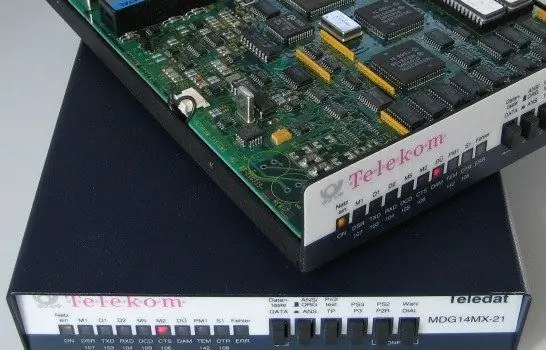- Author Lauren Nevill [email protected].
- Public 2023-12-16 18:48.
- Last modified 2025-01-23 15:15.
Some external and embedded modems, depending on the data transfer method, can change the download speed. These modems include, for example, DSL and Dial-Up modems connected to the telephone line. Their speed can be changed manually.

Instructions
Step 1
(A) DSL and Dial-Up modems can be configured using standard Microsoft Windows tools. To do this, just start the control panel from the system folder "My Computer" or the "Start" menu. In Control Panel, switch to small or large icons and select the Phone and Modem Options icon by double-clicking on it. If you are using an external modem and it has an On / Off key, check its position - the modem must be in an active state.
Step 2
After launching the "Phone and Modem" application, a small screen for managing devices for connecting to the Internet will appear on the screen. If this is your first time launching the application, it will prompt you to enter your area code. After entering the code, or if this is not the first time you launch the application, go to the Modems tab. The list of available devices will list all currently available working modems. Modems connected to the computer will be marked with the port number (COM #) written in the "Connected to" column.
Step 3
Left-click on the modem you are interested in and click on the "Properties" button located under the list of modems. Another special window will appear on the computer screen, displaying the properties of the device. Go to the "Modem" tab. Here you will see a section titled "Modem Port Speed". Click on the advertised speed to bring up a drop-down list of available speeds, indicated in bits per second, and select the higher or maximum speed offered.
Step 4
Once the speed is selected, click the OK button in the current and previous window. For the new settings to take effect, disconnect all network connections and then reconnect to them. If the drop-down menu with a list of possible speeds is not available to change, try disconnecting all networks and restarting your computer.






